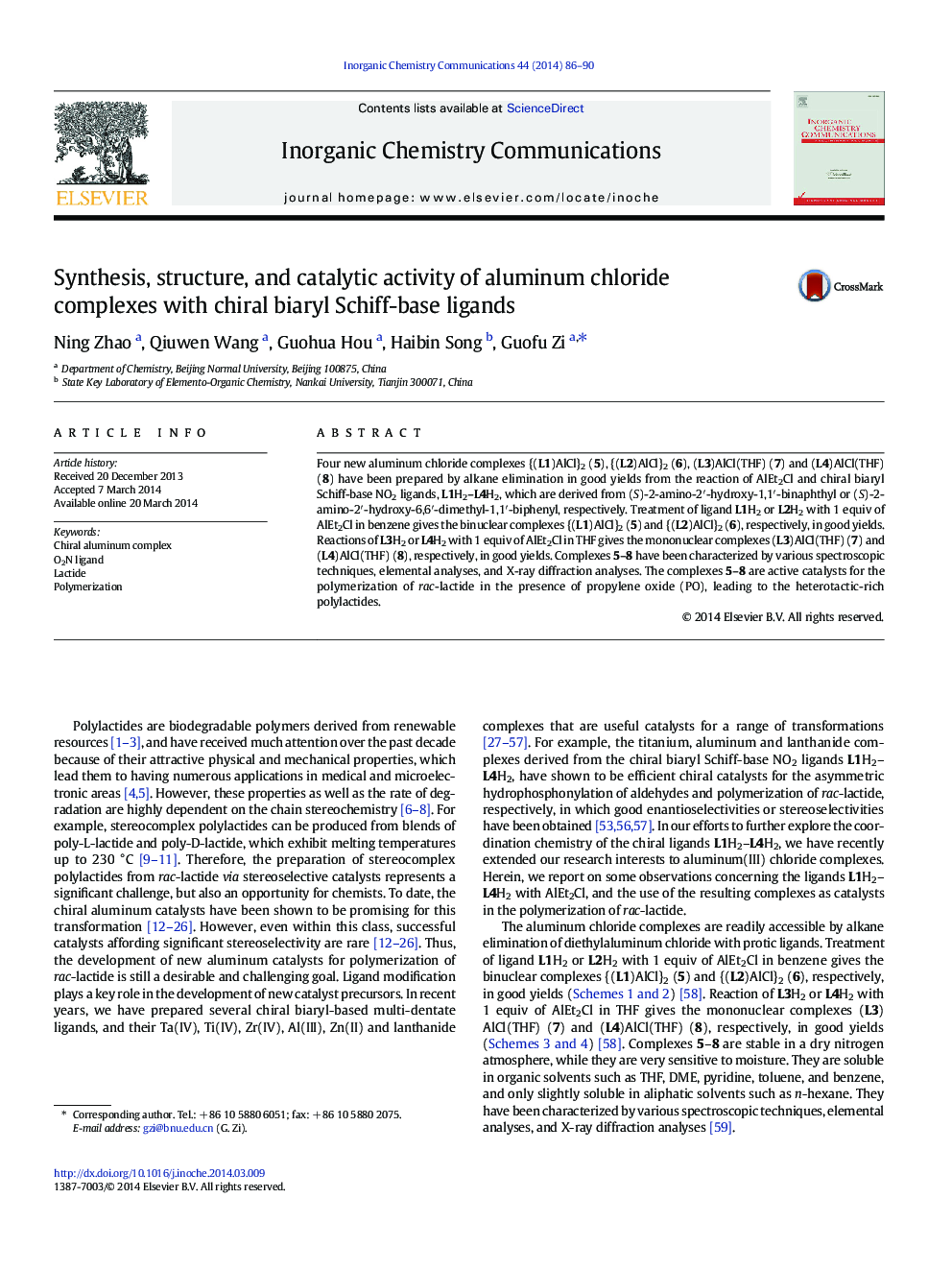| Article ID | Journal | Published Year | Pages | File Type |
|---|---|---|---|---|
| 1301639 | Inorganic Chemistry Communications | 2014 | 5 Pages |
•Four new chiral aluminum complexes have been reported.•They are active catalysts for the polymerization of rac-lactide.•Heterotactic-rich polylactides are obtained.
Four new aluminum chloride complexes {(L1)AlCl}2 (5), {(L2)AlCl}2 (6), (L3)AlCl(THF) (7) and (L4)AlCl(THF) (8) have been prepared by alkane elimination in good yields from the reaction of AlEt2Cl and chiral biaryl Schiff-base NO2 ligands, L1H2–L4H2, which are derived from (S)-2-amino-2′-hydroxy-1,1′-binaphthyl or (S)-2-amino-2′-hydroxy-6,6′-dimethyl-1,1′-biphenyl, respectively. Treatment of ligand L1H2 or L2H2 with 1 equiv of AlEt2Cl in benzene gives the binuclear complexes {(L1)AlCl}2 (5) and {(L2)AlCl}2 (6), respectively, in good yields. Reactions of L3H2 or L4H2 with 1 equiv of AlEt2Cl in THF gives the mononuclear complexes (L3)AlCl(THF) (7) and (L4)AlCl(THF) (8), respectively, in good yields. Complexes 5–8 have been characterized by various spectroscopic techniques, elemental analyses, and X-ray diffraction analyses. The complexes 5–8 are active catalysts for the polymerization of rac-lactide in the presence of propylene oxide (PO), leading to the heterotactic-rich polylactides.
Graphical abstractA new series of aluminum complexes have been prepared from chiral biaryl Schiff-base NO2 ligands. The aluminum complexes are active catalysts for the polymerization of rac-lactide, leading to the heterotactic-rich polylactides.Figure optionsDownload full-size imageDownload as PowerPoint slide
